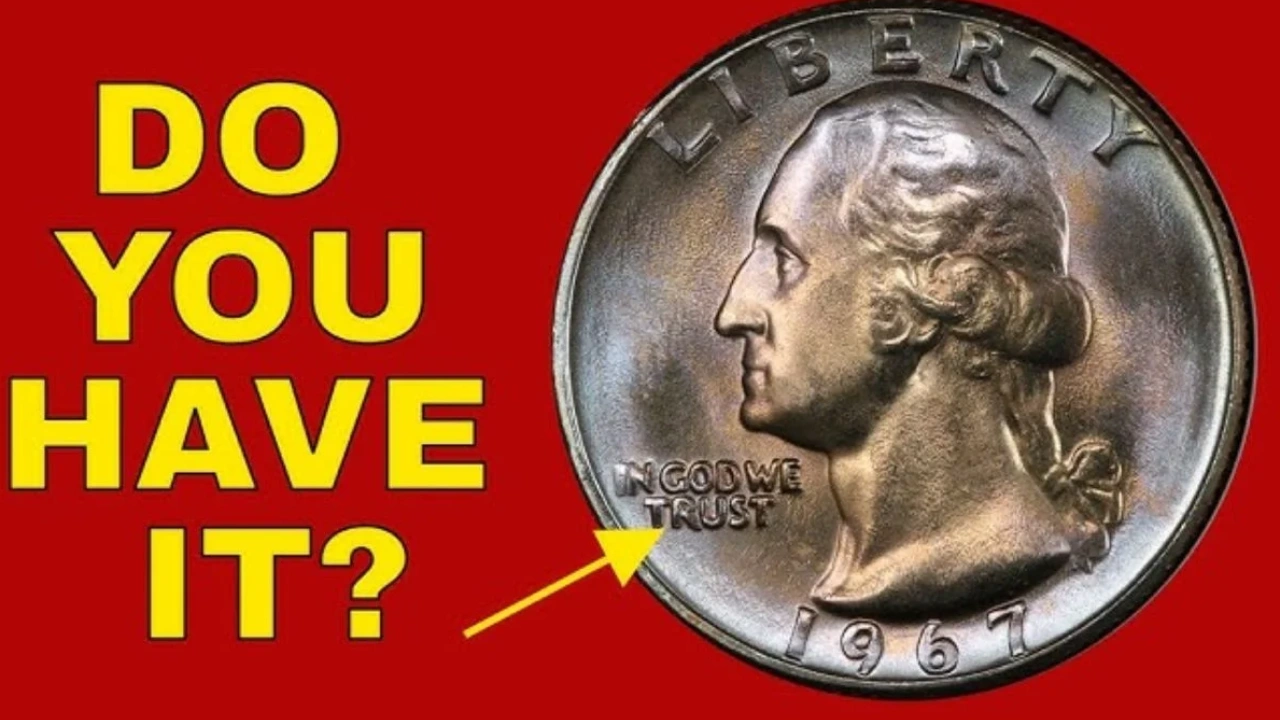The year 1967 was pivotal for US coinage. Amidst the switch from silver to copper-nickel clad composition and intense pressure to produce billions of coins, the US Mints made more than their share of mistakes. While most were caught, some fascinating errors slipped through, becoming instant rarities. Today, fueled by passionate collectors and advanced detection tools, these errors command astonishing premiums. Let’s crack open the vault on the most sought-after 1967 quarter errors you NEED to know about.
The Infamous 1967 No Mint Mark Mystery: Philadelphia’s “Oops” Moment
All regular-issue 1967 quarters should bear a mint mark indicating where they were struck: “D” for Denver or “S” for San Francisco. Coins from the main Philadelphia Mint traditionally carried no mint mark. However, a critical error occurred when Philadelphia Mint dies (the stamps that imprint the design) were accidentally used at the Denver Mint. This resulted in quarters struck in Denver that completely lacked the “D” mint mark.
(Value & Identification – 2025 Context) Finding a genuine 1967 quarter with no mint mark at all is the holy grail for many error collectors. Authentication by top-tier services like PCGS or NGC (whose wait times for error coins are still significant in mid-2025) is absolutely crucial due to sophisticated counterfeits. Graded examples in Mint State condition (MS-63 and above) regularly fetch between $1,500 and $3,500+ in recent 2025 auctions. Key identification points:
-
Complete absence of a mint mark on the reverse (tails side), near the tail feathers.
-
Sharp, well-defined details consistent with a genuine strike.
-
Crucially: Must exhibit characteristics proving it was struck in Denver (often subtle differences in metal flow or die markers experts recognize).
Beyond the Missing Mark: Other 1967 Errors Demanding Top Dollar
While the No Mint Mark is king, other striking blunders from 1967 are incredibly valuable:
-
Spectacular Off-Center Strikes (5% to 50%+): When the coin blank isn’t properly centered under the dies, part of the design is missing. The more dramatic the misalignment, the higher the value.
-
2025 Value Range: A quarter showing 30-50% off-center, with clear date and partial design, can easily command $500 to $1,200+ depending on visual appeal and grade. Extremely severe (60%+) examples are museum pieces worth far more.
-
-
Doubled Die Obverse (DDO): Caused by a misalignment during the die creation process, resulting in a distinct doubling of letters, numbers, or Washington’s profile. Specific, cataloged varieties are highly prized.
-
2025 Value Range: Strong, easily visible DDO varieties start around $250-$500 in lower grades and soar into the $1,000-$2,500+ range for sharply struck, well-preserved examples (MS-63 or better). Identification requires magnification.
-
-
Broad Strikes (Collar Breaks): If the retaining collar (which gives the coin its edge and size) fails, the coin metal flows outward freely, creating a larger, thinner, distorted coin often with a “wavy” edge.
-
2025 Value Range: Dramatic broad strikes are visually striking and rare. Values typically range from $200 to $800+, heavily dependent on the severity of the error and eye appeal.
-
Your Treasure Hunt Action Plan (June 2025 Edition)
Finding these errors isn’t about luck alone; it’s a skill. Here’s your 2025 strategy:
-
Get Hands-On (Experience): Start examining every 1967 quarter you find, especially looking for the absence of a mint mark. Use a decent 10x jeweler’s loupe.
-
Focus on Condition: An error on a worn, damaged coin loses significant value. Seek coins with minimal wear and good eye appeal.
-
Authentication is Non-Negotiable (Trust): The market is rife with altered coins and fakes. Do not buy or sell a potential key 1967 error without certification from PCGS, NGC, or ANACS. Reputable dealers insist on this.
-
Know the Market (Expertise): Follow recent auction results on platforms like Heritage Auctions or Great Collections. Values shift, and 2025 has seen continued strong demand for high-grade errors.
-
Handle with Extreme Care: Never clean a potential rare coin! Fingerprints and abrasions destroy value. Hold by the edges only.
(Conclusion/Takeaway) That unassuming 1967 quarter in your change jar or inherited collection isn’t just nostalgia – it could be a significant financial asset. By understanding the specific errors minted that chaotic year, particularly the legendary Philadelphia-dies-in-Denver No Mint Mark variety and dramatic striking mistakes, you unlock the potential for thousands. The hunt is real, the market is active in 2025, and your next rare find could be closer than you think. Grab your loupe and start searching – fortune truly could be in your pocket! Remember, knowledge and professional verification are your most valuable tools. Happy hunting!
Also Read: Why the 1976 Bicentennial Quarter Still Captivates in 2025
Hi, I’m Ehsaan Mukherjee – the mind behind slategray-tarsier-598917.hostingersite.com. I’ve always been fascinated by the power of technology and the thrill of automobiles. This platform is my personal space where I explore, write, and share everything that excites me in these two dynamic worlds.
Whether it’s breaking down the latest car models or diving into the world of innovative gadgets, I believe in keeping things simple, practical, and useful. slategray-tarsier-598917.hostingersite.com is more than just a website — it’s my way of connecting with curious minds like yours.
